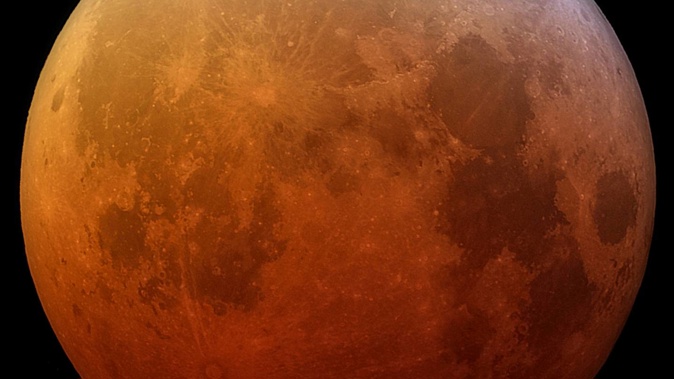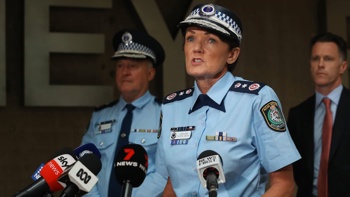
South Islanders remain in prime position to catch a glimpse of the first "blood supermoon" in nearly 40 years, with cloud threatening to spoil the rare lunar spectacle for much of the rest of the country.
That's according to MetService's latest forecast for Wednesday night, when a "supermoon" will coincide with a total lunar eclipse for the first time since 1982.
MetService meteorologist Angus Hines said cloud was likely to blanket the night sky across the North Island's East Coast - and potentially also Northland, Auckland and down to Hamilton.
"And then there may be a bit of cloud sneaking through Cook Strait and crossing over Wellington," Hines said.
"The flip side of that is most of the South Island looks to be relatively clear, aside from just a small amount of cloud around Fiordland and in about coastal parts of Marlborough and Kaikoura.
"So, kind of everywhere else in the south is probably shaping up getting a good view of the supermoon on Wednesday, but it's not looking quite so good elsewhere unless you're in the western North Island, between Kapiti and Waikato."
Whether the supermoon could still appear striking through overcast skies depended on the thickness of cloud at the time, he said.
"It's pretty uncommon that you can make out the shape of the regular moon through clouds - so it has to be really a thin layer."
As for seeing the signature red tinge that comes with a total eclipse, Stardome astronomer Dr Grant Christie said that also depended on conditions at the time - and not just weather, but also factors like dust in the atmosphere.
"And in any case, totality is only supposed to last 15 minutes - so you could just have a bit of cloud going over and you've missed it."
Blood moons - also known as total lunar eclipses - occur when the Earth lines up between the Moon and the Sun.
This hid the Moon from sunlight and blocked most of the blue light, with the remaining light refracting onto the Moon's surface and causing a red glow.
A "supermoon", meanwhile, occurred when the Moon is at its closest point in its orbit around Earth - making it appear much larger than usual.
The lunar eclipse was due to last five hours, beginning at 8.47pm on Wednesday, and ending at about 1.49am the next morning.
The period of "totality" where the Moon was completely hidden from the Sun by Earth - and when the reddening was most noticeable - was due to begin at 11.11pm.
"Blood supermoons occur every few years, but aren't always visible in Aotearoa with the last one in December 1982," Stardome Observatory and Planetarium astronomy educator John Rowe said.
"We've waited almost 40 years for this, so it's exciting."
Take your Radio, Podcasts and Music with you









